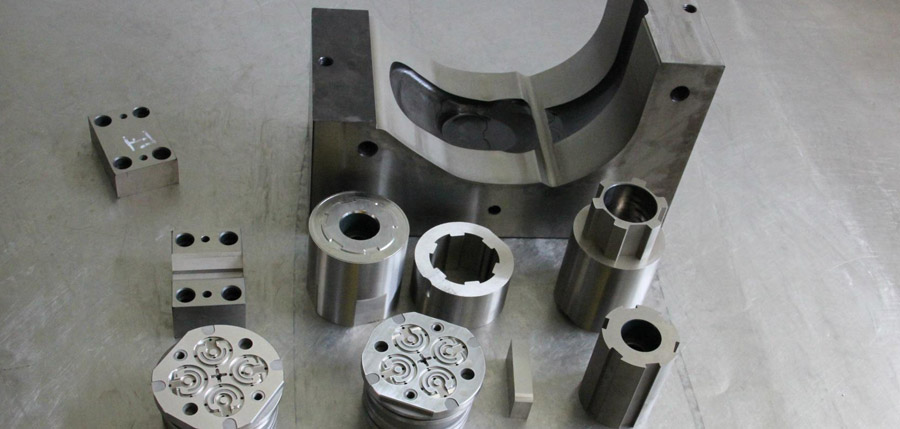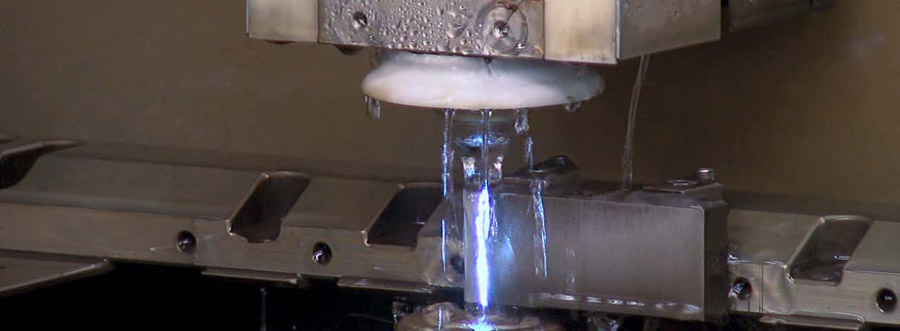As EDM machining has many incomparable advantages in traditional cutting, its application fields are expanding day by day, and it has been widely used in machinery, aerospace, aviation, electronics, motors, electrical appliances, precision machinery, instruments, automobiles, light industry, etc. Industry to solve the machining problems of materials and parts with complex shapes.
However, EDM also has its limitations. At the same time, as with traditional machining, various errors of the machine itself, positioning and installation errors of the workpiece and tool electrodes will all affect the accuracy of EDM. In addition, the main factors related to the EDM process are the size and consistency of the discharge gap, and the wear and stability of the tool electrode.

Limitations Of EDM Machining
1. It can only be used for machining metal and other conductive materials
Unlike cutting processing, insulating non-conductive materials such as plastics and ceramics can be processed.
2. The machining speed is generally slow
Therefore, the process is usually arranged to use cutting to remove most of the amount, and then perform EDM to improve production efficiency
3. It has electrode loss
Since EDM machining relies on electricity and heat to remove the metal, the electrode will be worn out, and the electrode wear is mostly concentrated in sharp corners or low surfaces, which affects the forming accuracy
4. The minimum corner radius is limited
Generally, the minimum corner radius that can be obtained by EDM is equal to the machining gap (usually 0.02-0.3mm). If the electrode is worn or processed by a flat moving head, the corner radius should be increased.

Factors Affecting The Accuracy Of EDM
In EDM machining, the discharge gap can be compensated by correcting the size of the electrode to obtain higher machining accuracy. However, the size of the discharge gap actually changes, which affects the machining accuracy.
1. Surface roughness
The roughness of the EDM machined surface depends on the depth of the electric discharge pits and the uniformity of their distribution. Only when shallow and uniformly distributed electric discharge pits are produced on the machined surface, can the machined surface have a smaller roughness value. In order to control the uniformity of the discharge pits, it is necessary to adopt equal energy discharge pulse control technology, that is, to detect the falling edge of the gap voltage breakdown, control the discharge pulse current width to be equal, and use the same pulse energy for processing, so that the surface roughness of the processing is uniformly.
2. The influence of machining clearance (side clearance)
The size and consistency of the machining gap directly affects the accuracy of EDM machining. Only by grasping the value of the machining gap and surface roughness of each standard, can we correctly design the size of the electrode, determine the amount of shrinkage, and determine the standard conversion during the machining process.
3. The influence of machining slope
In machining, regardless of the hole or cavity, the side wall has a slope. The reason for the slope is that, in addition to the original slope of the electrode side wall itself in the technical requirements or manufacturing, it is generally caused by the uneven loss of the electrode. , And “secondary discharge” and other factors.
(1) The influence of electrode loss.
The electrode forms a taper due to wear, and this taper is reflected on the workpiece to form a machining slope.
(2) The influence of the degree of contamination of the working fluid.
The dirtier the working fluid, the more opportunities for “secondary discharge”. At the same time, due to the poor state of the gap, the number of electrode pick-ups will inevitably increase. Both of these conditions will increase the processing slope.
(3) The influence of oil flushing or pumping.
The influence of oil flushing or pumping on the processing slope is different. When processing with flushing oil, the electro-corrosion products flow out from the processed surface, which increases the chance of “secondary discharge” and increases the processing slope. When oil pumping is used for processing, the electrolytic corrosion products are discharged from the suction tube, and clean working fluid enters from the periphery of the electrode, so there is less chance of “secondary discharge” on the processed surface, and the processing slope is also small.
(4) The influence of machining depth
As the processing depth increases, the processing slope also increases, but not proportionally. When the processing depth exceeds a certain value, the upper mouth size of the processed part will no longer expand, that is, the processing slope will no longer increase. Different processing objects have different requirements for processing inclination. In the cavity processing, since it requires a certain draft angle, the processing angle is not strict. For straight-wall die, the processing slope is required to be stricter. As long as the laws that affect the processing slope are grasped, the predetermined requirements can be achieved.
4. Reasons and laws of rounding the corners
The loss of the electrode’s sharp corners and edges is more serious than the loss of the end face and side. Therefore, the loss of the electrode’s corners causes the corners to be rounded, and it is impossible to clear the processed workpieces. Moreover, as the processing depth increases, the radius of the electrode flute corner rounding increases. But beyond a certain processing depth, its increasing trend gradually slows down, and finally stays at a certain maximum value.
The reason for the rounded corners is not only the wear of the electrode but also the equidistance of the discharge gap. Because of the equidistance of the sharp-corner discharge, the convex sharp electrode will inevitably make the workpiece rounded, the sharp point of the concave sharp electrode has no discharge function at all, but the workpiece will be rounded due to the accumulation of debris.
Therefore, even if the electrode is completely free of loss, it is still impossible to get a complete cleaning due to the equidistance of the gap discharge. If the rounding radius is required to be small, the discharge gap must be reduced
The working medium is the basic condition for generating electric discharge, and liquid medium is mainly used at present. It forms a spark breakdown discharge channel, produces compression on the discharge channel, and quickly restores the insulation state of the gap after the discharge is completed, helps the ejection and removal of electrical corrosion products, and cools the tool. Therefore, the medium has a great effect on EDM machining.


